How King George IV’s extramarital liaisons took the traffic away from The Coach House in Slane
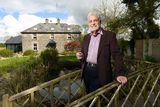
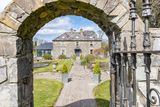
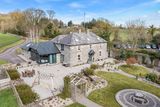
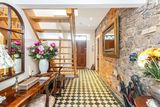
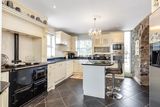
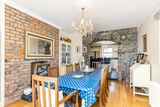
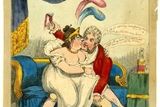

The Coach House, Cullen, Beauparc, Slane, Co Meath Asking price: €795,000 Agent: Sherry FitzGerald Reilly (046) 9060450
Slane-based motor enthusiast and former competitive driver Mike Armstrong is proud of his collection of classic cars. The sleek lines, the smell of leather interiors and the roar of engines are his great passion in life.
And when it comes to a home, his tastes are also classic. His 19th-century house at Cullen, Beauparc, at Slane in Co Meath has kept many of its vintage features, although in recent years it has been more finely tuned.
The front of the house as viewed through the archway
The site was once located beside the main road to Dublin. That was until an English king (whose own great passion was an Irish aristocrat’s wife), stepped in to reconvene the area’s geography.
An aerial view of the exterior and grounds
George IV had the road from Dublin to Slane straightened with the sole aim of deporting himself from the capital to the bed chamber of his mistress Lady Elizabeth Conyngham at Slane Castle and at the greatest speed possible under old horsepower.
Initial work took place around 1815 and further alteration of the route was carried out in 1821, in advance of his infamous visit in that year, the sole basis of which seems to have been a liaison with Lady Conyngham at Slane Castle. Her descendant Lord Henry Mountcharles is today master of that house. And George was en route on the day that the funeral of his much-loved queen was being held.
The entrance hallway and stairs
George married Caroline of Brunswick in 1795 but separated informally after the birth of their daughter Princess Charlotte in 1796. As prince regent and soon-to-be king, George had instructed his ministers to ‘get rid of her’.
Read more
This led to the Pains and Penalties Bill to legislate for a divorce from Caroline and to prevent her from becoming queen. He excluded her from his coronation on July 19, 1821, but she turned up anyhow to find her entry barred. Meanwhile, the king scandalised the congregation by winking and waving at Lady Conyngham all through the ceremony.
The kitchen
Mysteriously, Caroline fell ill the day after the coronation. She claimed she was poisoned and died on August 7. The well-loved queen’s funeral cortège sparked riots as it passed through London. But George was already on a ship headed for Lady Conyngham.
At this point in his life the very rotund monarch was known for his excesses: of women, wine, huge meals and drug taking (his bedtime tipple was brandy laced with opium). Lady Conyngham would remain his mistress until he died in 1830 aged 67.
Located 4kms from Slane, the Coach House is a stone-built farmhouse and is accessed from a cul-de-sac, once part of the old main road. These days a lusty monarch would likely use a fast car to make haste to Slane. For his part, Mike Armstrong is chairman of the Celtic Old Vehicle Owners Club (COVOC) in Co Meath and his collection includes a 1949 MG and a 1961 MGA.
The dining room
Armstrong was a saloon car racer between 1975 and 1990 and often took the honours at the Phoenix Park. He competed at Mondello and made a name in ‘street racing’.
By the mid-2000s Mike and his late wife Claire were happy to abandon the circuit for the more leisurely pace of country living. In 2006 they bought The Coach House from well-known Irish guitarist Jimmy Smyth, who had already undertaken most of the refurbishment work on the house.
The original residence was a double-fronted stone farmhouse, one room deep. An extension of similar dimensions was added to the rear decades back when the house was known as ‘Green Acres’. It became ‘The Coach House’ when Jimmy Smyth bought and completely refurbished it in 2003. The Armstrong’s contribution was the addition of a sunroom to the side linking the main house to a former studio that is now an office.
King George IV and his mistress Lady Elizabeth Conyngham
To the front of the house is a landscaped garden with decorative stonework, a miniature bridge and an array of water features, including ponds and a waterfall. At the back is an enclosed tiled area with kennels and storage spaces.
The entrance hall, with a traditional tiled floor, opens to a sitting room to the right and a dining room to the left while an arched doorway leads to the back hall which opens to the kitchen, the sunroom, a WC and the backyard. The dining room has a fireplace and a cut-stone archway opening to the kitchen. Throughout the house much of the original internal stonework is revealed to great effect. The kitchen is of modern design with fitted units, a double oven, an AGA and an island.
Mike Armstrong’s car collection
The sitting room to the left of the hall is a bright space with a stove installed in the original fireplace, a wooden floor, a window to the front and double doors leading to the extensive cobble-locked area.
The sunroom to the left and rear is an open-plan area with a large solid-fuel stove, a dining area and a lounge area. Off the sunroom is an office with double doors leading to the enclosed yard at the back. Other downstairs accommodation includes a storage area and a WC. Upstairs are three bedrooms and a large dressing room with the potential to be converted into a fourth bedroom. The master bedroom has ensuite facilities with a family bathroom also on the first floor.
Out of doors is a fully insulated and secure 4,000 sq ft storage shed built in a steel portal frame construction, which can store up to 30 cars and is suitable for a range of uses. The entire property consists of eight acres, the major part of which is rented to a local farmer.
The sale is being handled by Sherry FitzGerald Reilly and the guide is €795,000.














